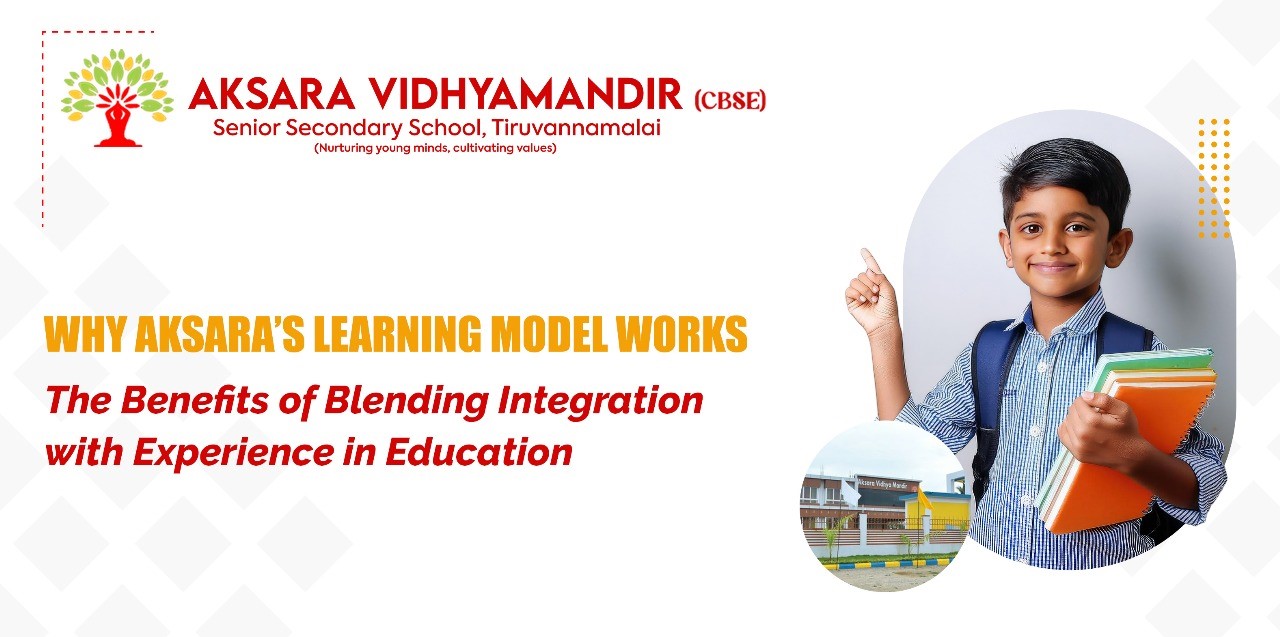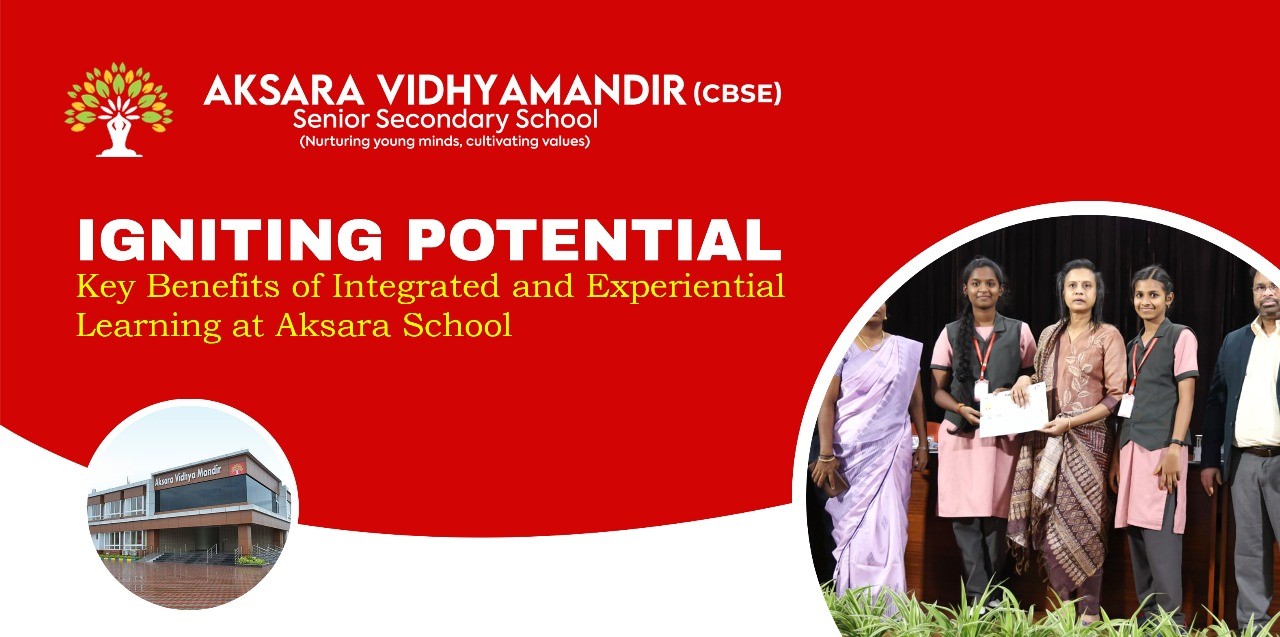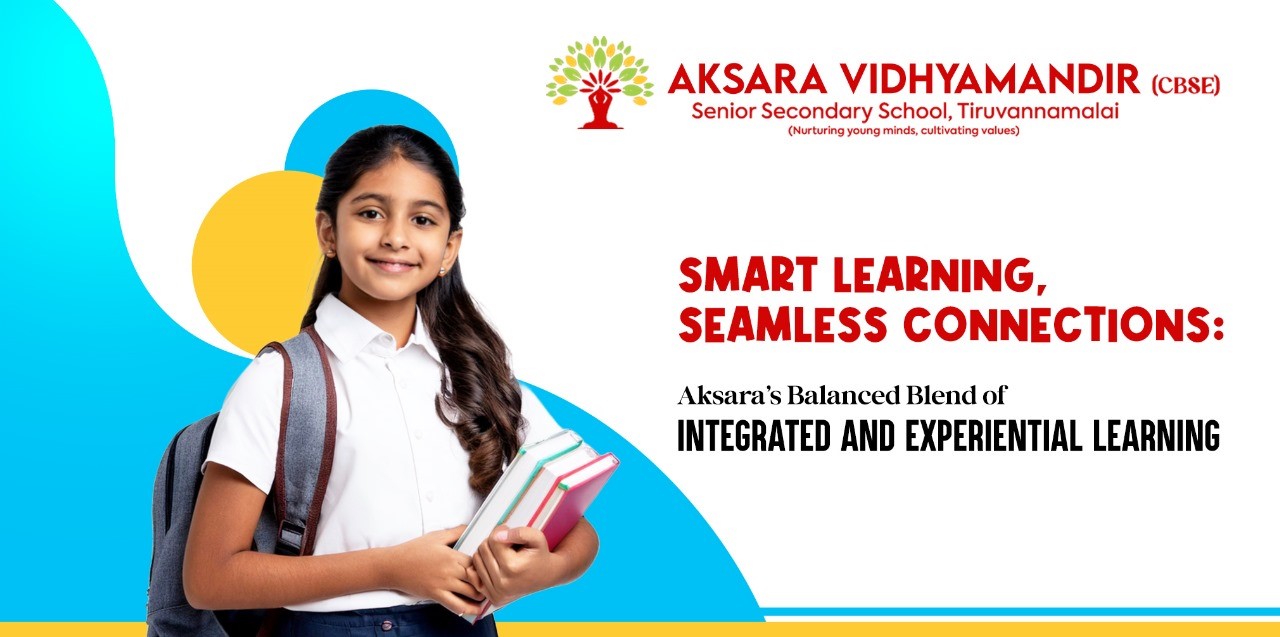Why Aksara’s Learning Model Works: The Benefits of Blending Integration with Experience in Education
Learning at Aksara is a conscious journey. The classrooms aren’t where information is imparted, they’re creative spaces where concepts are created, memories are actualized, and integration is an interlacing twine joining education and life. What sets Aksara apart isn’t so much its curriculum, it’s the experience. It’s the interplay between integration and experience that turns lessons into epochal experiences.
A Unified Approach to Academic Development
One of the basic ways Aksara’s model succeeds is by resisting the tendency to fragment knowledge into isolated bits. Instead, students learn from conceptions integrated in a web that spans disciplines. But what infuses these unifications with life is how they are situated in experiential, real-world experience.
At Aksara, what they learn is always linked with how they are taught it in experiences that involve curiosity, action, reflection and discussion. That’s the winning formula, and here’s why.
The Magic of Integration Backed by Experience
Individual Journey of Every Learner
In Aksara, the line loops, extends and branches out because that’s the way the brain works. If a lesson on environmental science incorporates concepts of math, geography and literature, it’s no longer a chapter, it’s a rich experience with many facets.
And then, when that lesson brings students out into the field to study local pollution, log real-time data and construct a digital report, that’s when learning is complete. That’s when experience solidifies integration with comprehension.
Relevance Defines Value
It’s not what’s in the textbook. It’s why it matters. Aksara’s learning approach to presenting each concept in a meaningful context ensures that students are not memorizing but relating, applying and owning. Whether relating a math problem to a community-based budget plan or using a fictional novel in English to teach empathy in social science, they understand it.
And that’s what creates lasting retention, when instruction is based on actual experience instead of curriculum plans.
Experience Creates Confidence, Not Competence
Students Learn by Doing, Not Knowing
There’s a shift that happens when a child builds a working model instead of drawing it. There’s confidence in building a solar car, performing about the lives of the great reformers, or conducting a community health survey. Aksara’s approach turns every student into an active learner and not a passive receiver. They don’t just learn about change they become aware of their ability to make it happen.
Learning Has a Purpose and a Direction
Each Lesson is a Step, Not an Independent Block
By combining experience with education, Aksara incorporates every learning moment into the whole process. Students begin to observe patterns how a scientific principle ties into an art principle or how something from the past has implications in present-day civic responsibilities. This method builds clarity of mind and allows them to link beyond the academic into values, ethics and meaning.
Reflection Turns Experience Into Insight
What makes Aksara’s model unique is the built-in pause, time to think about what they did, how they did it and what it means. From a science experiment or visit to a community, reflection is supported by open discussion, writing in a journal or visual storytelling. These pauses in action turn experience into deep understanding molding minds, not just students.
Why This Model Works for Every Type of Learner
Learning at Aksara is no one-size-fits-all proposition. The combination of integrated-experiential pieces with every learning style of visual, kinesthetic, auditory, social. When concepts are introduced by means of story, movement, project work and collaboration, every learner gets their moment of connection. This model celebrates different intelligences and allows space for each child to shine.
Finally, what truly makes Aksara’s model successful is that it mimics life. In life, problems don’t neatly fall under one topic. Solving them takes imagination, reason, empathy and action, the same kind of disposition this model cultivates. By merging experience with integration, Aksara does not just prepare students for the exam, it makes them to experience and explore.
FAQs
Aksara avoids isolated subject instruction. Instead, it connects ideas between subjects and reinforces them with real-life experiences, hence making learning meaningful and imprinted.
Yes. Aksara's methodology offers deep conceptual comprehension, which surprisingly boosts test performance. Students are taught to apply knowledge rather than memorization.
Yes. Activities vary and are open with single, small group and large group options. Reflection and journaling also give quieter students a chance to articulate.
Yes, the model does scale according to age. Young children acquire their learning in play-based interwoven themes, while older students do projects with a more structured nature and intensive reflection.
Progress is tracked through continuous assessments, project reviews, observations and personalized feedback. This gives a general idea of growth of academic and personal.
Conclusion
Aksara’s approach to learning works because it is based on how children learn naturally by connecting, experiencing, reflecting and exploring. Experience and integration are not personality traits, they are the building blocks. In a world that calls for flexibility, creativity and practicality, Aksara’s approach prepares students to not only succeed, but thrive.



